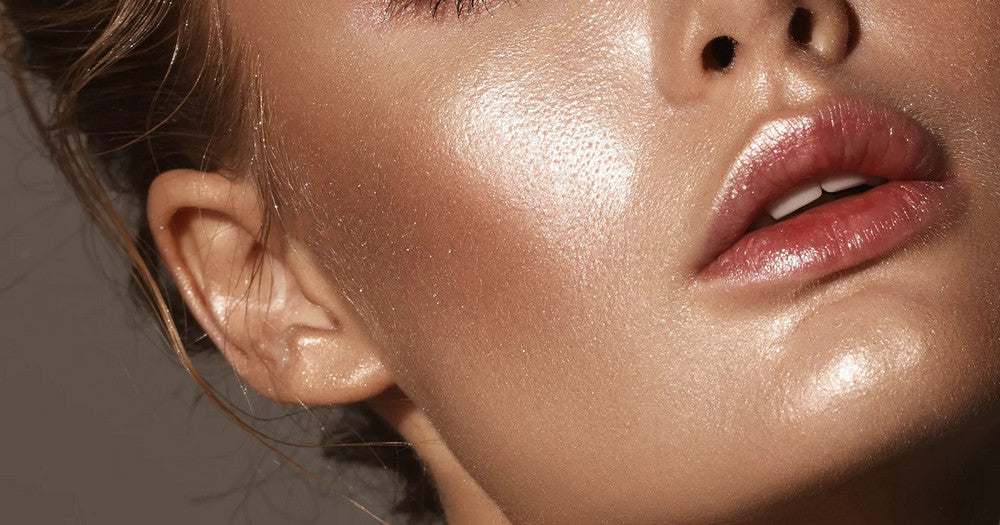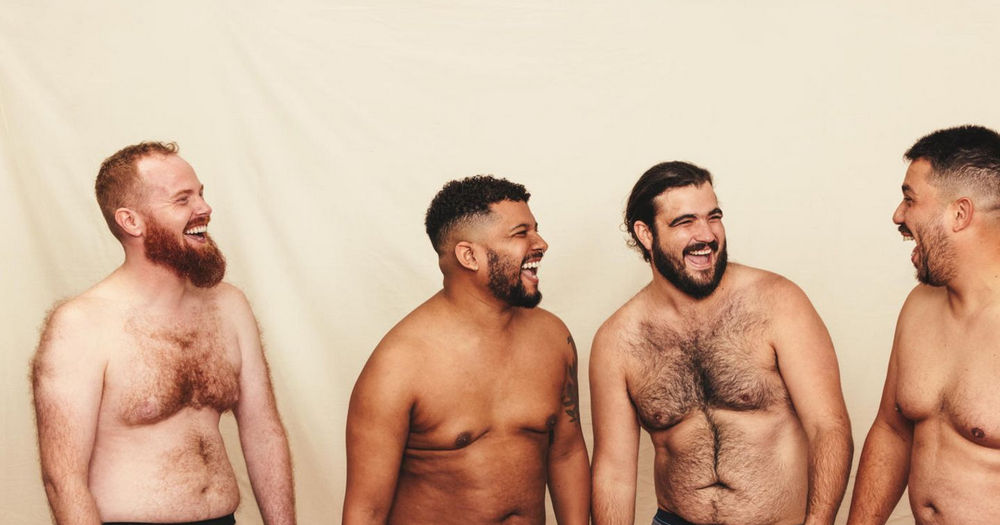Introduction
According to a study, 5 to 10% of women between the ages of 15 and 44, the years when you can have children, have PCOS. Polycystic ovary syndrome (PCOS) is a common hormonal disorder that affects women of reproductive age. Surprisingly, thousands of people are still unaware that it is a condition that affects the lives of women around the world.
Although the main cause of PCOS is not yet fully understood, the overproduction of androgens is considered to be one of the most important factors that can trigger this condition. Androgens, such as estrogen, progesterone and luteinizing hormone (LH), are responsible for various functions and processes in the body, including regulating the menstrual cycle and ovulation, as well as developing and maintaining sexual characteristics such as pubic hair, body hair and muscle mass.

Since these hormones regulate various processes in the body, an overproduction affects most of these processes. For example, acne, infertility, irregular periods, weight gain, depression and anxiety, and hirsutism , to name a few. Hirsutism is probably one of the most common problems. Excessive hair growth can be very frustrating and embarrassing.
There are new techniques, such as IPL (Intense Pulsed Light) hair removal , that will help you get rid of this unwanted situation. Therefore, we will take a closer look at this method, explain its advantages over other methods and provide a detailed guide on how to use this technique.
Table of contents:
- Part 1: Introduction
- Part 2: What is IPL hair removal?
- Part 3: Benefits of IPL Hair Removal
- Part 4: How to Use IPL Hair Removal for People with PCOS
- Part 5: Conclusion
What is IPL hair removal?
Intense Pulsed Light hair removal is a popular method to treat various skin conditions, especially to remove unwanted hair from the body. Using a broad spectrum of light that is absorbed by the pigments in the hair follicle, IPL damages hair and prevents further growth. It has become a preferred option for hair removal because it offers a long-term solution for hair removal and has little to no side effects.
In fact, IPL is a preferred option over laser hair removal. The IPL technique uses a broad spectrum of light and is therefore suitable for treating a wide range of skin and hair types. In contrast, laser hair removal is not compatible with different skin types, body areas - such as the face, underarms, legs and bikini line - and hair types because it only uses a single wavelength of light.
IPL treatment uses a handheld device that emits photons of light into the skin that are absorbed by the hair follicle. These pulses of light produced heat and damage the hair root, preventing future hair development. It is also an excellent remedy for reducing hair growth in people who suffer from conditions such as PCOS that cause excessive hair growth.

The IPL hair removal technique offers a number of advantages over other methods of removing unwanted hair. Although IPL is not without its drawbacks and quirks, below are some of the impressive benefits of this powerful technique.
Benefits of IPL Hair Removal
IPL hair removal is a very popular method for people who want to remove unwanted hair from their skin. Below are some of the reasons why many people prefer this wonderful hair removal method:
-
Long-lasting results
One of the most impressive benefits of IPL hair removal is the long-lasting solution to unwanted hair removal that it offers. Unlike other techniques, IPL targets the hair follicle, damaging it and preventing future hair growth. Therefore, the result is long-lasting and usually requires fewer treatments than traditional methods of hair removal.
-
Safe and effective
IPL hair removal has been used safely and effectively for the cosmetic treatment of many vascular lesions, unwanted hair and pigmented lesions. Compared to other methods of hair removal, such as waxing or shaving, IPL hair removal has fewer risks and side effects.
-
Versatile
Unlike laser hair removal, IPL hair removal can be used on various areas of the skin and body, such as the forehead, between the eyebrows, cheeks, sides of the face, upper lip, chin, neck, shoulders, back and chest. IPL is also effective in reducing hair growth in people with PCOS .
-
Fast and practical
You can perform IPL hair removal in the comfort of your own home. It doesn't take much time, making it the perfect option if you have a busy schedule. It can also be done at a spa or salon.

-
Cost-efficient
Factors such as individual hair and skin type, the size of the area to be treated and the number of sessions required to achieve the desired result determine how expensive the IPL hair removal method will be.
Compared to some traditional hair removal methods, such as waxing and shaving, IPL hair removal can be significantly more expensive. However, because IPL offers long-lasting solutions to unwanted hair growth, thereby reducing the need for frequent hair removal treatments, IPL is considered cost-effective.
-
Less painful
IPL hair removal is typically less painful than other hair removal methods such as waxing or threading, making it a more comfortable option for individuals.
IPL hair removal offers a number of impressive benefits that make it a popular choice for individuals looking to remove unwanted hair from their body. And more importantly, it is the perfect option for anyone suffering from conditions such as PCOS to remove unwanted hair growth.
How to Use IPL Hair Removal for People with PCOS
The best way to get the best results with any technique is to use the right method. The same goes for IPL hair removal . It's best to talk to your doctor to make sure this technique is a safe and effective method of hair removal for you.
Below you will find a step-by-step guide for IPL hair removal :
-
Prepare the skin
Before using IPL hair removal, you must first prepare the skin. This can be done by cleaning and drying the skin. Lotions, creams or other products that may interfere with the treatment should be avoided before using this device.

The reason for this is that these products can create a kind of barrier that prevents the light pulses from penetrating the skin and reaching the hair follicles, making the method less effective. Preferably use a cleanser to remove any dirt, oil or grease that could affect the effectiveness of the device.
-
Adjust the device settings
IPL hair removal is designed for different skin and hair types, so you should read the instructions before using the device. The device has different functions, such as energy level, treatment mode, pulse duration, etc. It is important that you read the manufacturer's instructions to find out how these functions should be regulated and controlled.
Adjusting the device will not only help you optimize the treatment, but will also ensure the device is safe for your skin and hair types. Read the user manual before using the device.
-
Test the device
After adjustment, it is very important that you test IPL hair removal on a small area of skin to ensure effectiveness and safety for your hair and skin type. If you experience any side effects, irritation or discomfort, you should switch off the device immediately.
Either try adjusting the settings again or consult a professional. If you do not notice any reaction or irritation, proceed to the next step.

-
Start the treatment
Once you are sure that the setting is safe and effective for your skin, carefully begin removing unwanted hair with the IPL device. Place the device on the affected area and press the button to emit pulses of light. Gently move the device over the areas to be treated.
However, avoid areas with wounds or tattoos so that the skin does not absorb even more light energy. This can increase the risk of burns, scarring or skin pigmentation. If you have tattoos and wounds on your skin, please talk to your doctor.
-
Repeat the treatments
To achieve maximum and effective results, you will need to repeat IPL hair removal treatments over multiple sessions. However, there are certain intervals that must be followed. Be sure to read the manufacturer's instructions to find out the recommended intervals.
-
aftercare
Make sure you take care of your skin after using your IPL hair removal device. This will help prevent any risk of side effects, discomfort or irritation that may occur. There are several ways to do this. First of all, you should avoid exposing your skin to direct sunlight for several days.

Also, avoid using any products that may irritate the skin until after a few days. Also, keep in mind that IPL hair removal should only be performed by trained professionals or with FDA-approved devices for home use.
As safe and effective as this method is, IPL hair removal can also be very damaging to the skin if used improperly .
Therefore, you should consult your doctor or a professional before hair removal. Also, make sure that you strictly adhere to safety guidelines during the treatment.
Conclusion
Although this impressive technique for removing excessive hair growth has been used for about two decades, many people are still unaware of it. The technique of IPL hair removal is on everyone's lips these days.
Thanks to its many benefits and efficiency, many people have chosen IPL hair removal as their preferred method. While it does have its drawbacks, they are nothing compared to the convenience and comfort of IPL hair removal.
The key to the safety and effectiveness of IPL hair removal is to seek your doctor's recommendations and to carefully read and follow the manufacturer's strict instructions.
references
- Ash C, Town G, Whittall R, Tooze L, Phillips J. Lasers and intense pulsed light (IPL) association with cancerous lesions. Lasers Med Sci. 2017 Nov;32(8):1927-1933. doi: 10.1007/s10103-017-2310-y. Epub 2017 Sep 7. PMID: 28884244; PMCID: PMC5653718.
- Ash C, Town G, Whittall R, Tooze L, Phillips J. Lasers and intense pulsed light (IPL) association with cancerous lesions. Lasers Med Sci. 2017 Nov;32(8):1927-1933. doi: 10.1007/s10103-017-2310-y. Epub 2017 Sep 7. PMID: 28884244; PMCID: PMC5653718.
- Abrouk M, Gianatasio C, Li Y, Waibel JS. Prospective study of intense pulsed light versus pulsed dye laser with or without blue light in the activation of PDT for the treatment of actinic keratosis and photodamage. Lasers Surg Med. 2022 Jan;54(1):66-73. doi: 10.1002/lsm.23492. PMID: 35043459.
- Li D, Lin SB, Cheng B. Intense Pulsed Light: From the Past to the Future. Photomed Laser Surg. 2016 Oct;34(10):435-447. doi: 10.1089/pho.2016.4139. Epub 2016 Sep 30. PMID: 27697004.
- DiBernardo BE, Pozner JN. Intense Pulsed Light Therapy for Skin Rejuvenation. Clin Plast Surg. 2016 Jul;43(3):535-40. doi: 10.1016/j.cps.2016.03.008. Epub 2016 Apr 29. PMID: 27363767.
- Ciocon DH, Boker A, Goldberg DJ. Intense pulsed light: what works, what's new, what's next. Facial Plastic Surg. 2009 Dec;25(5):290-300. doi: 10.1055/s-0029-1243077. Epub 2009 Dec 18. PMID: 20024870
- Nedresky D, Singh G. Physiology, Luteinizing Hormones. [Updated 2022 Sep 26]. In: StatPearls [Internet]. Treasure Island (FL): StatPearls Publishing; 2023 Jan-. Available from: https://www.ncbi.nlm.nih.gov/books/NBK539692/
- Rennick S, Adcock L. Intense Pulsed Light Therapy for Meibomian Gland Dysfunction: A Review of Clinical Effectiveness and Guidelines [Internet]. Ottawa (ON): Canadian Agency for Drugs and Technologies in Health; 2018 Feb 8. Available from: https://www.ncbi.nlm.nih.gov/books/NBK531789/
- Goldberg, D.J. (2012). Current Trends in Intense Pulsed Light. The Journal of Clinical and Aesthetic Dermatology, 5(6), 45-53. https://www.ncbi.nlm.nih.gov/pmc/articles/PMC3390232/
- Thacker, P., & Kumar, P. (2016). Near Infrared Pulsed Light for Long-lasting Hair Reduction in Fitzpatrick Skin Types IV and V. Journal of Cutaneous and Aesthetic Surgery, 9(4), 249-253. https://doi.org/10.4103/0974-2077.197078
- Fodor, L., Carmi, N., Fodor, A., Ramon, Y., & Ullmann, Y. (2009). Intense pulsed light for skin rejuvenation, hair removal, and vascular lesions: a patient satisfaction study and review of the literature. Annals of plastic surgery, 62(4), 345–349. https://doi.org/10.1097/SAP.0b013e3181856d6a
- González-Rodríguez, A. J., & Lorente-Gual, R. (2015). Current indications and new applications of intense pulsed light. Actas dermo-sifiliograficas, 106(5), 350–364. https://doi.org/10.1016/j.ad.2014.10.004




























